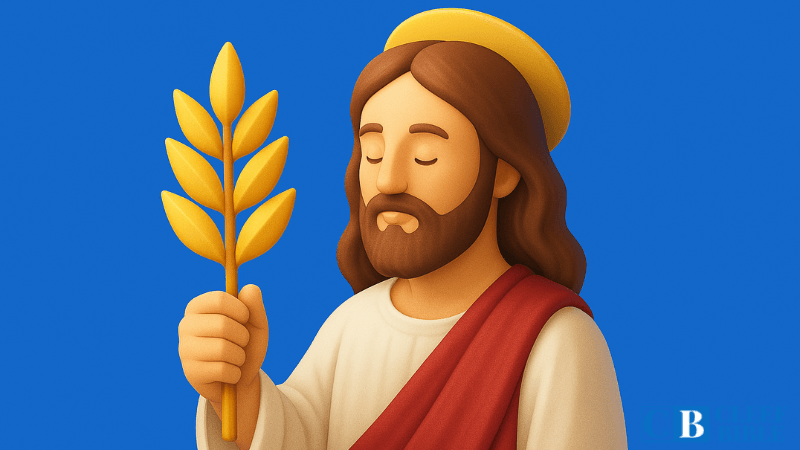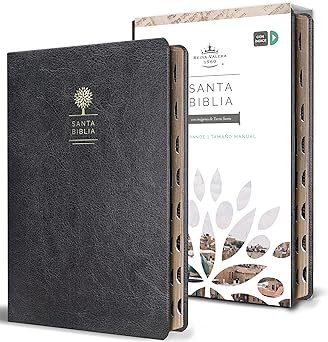Why did Jesus choose to tell stories rather than give direct theological explanations?
What power is there in a parable that can transform hearts across centuries?
Jesus' parables were not mere tales with morals, but teachings laden with eternal truth, designed to reveal the mysteries of the Kingdom to those with ears to hear.
In this article you will discover how many parables did Jesus tell, which are the best known, their purpose, how to interpret them correctly and how they continue to impact lives today.
What is a parable and why did Jesus use them?
A parable is a short story with a deep spiritual meaning, designed to illustrate eternal truths through everyday situations. Jesus used them as a teaching tool to reveal the Kingdom of God in an accessible yet challenging way. Each parable has a striking core that invites reflection, repentance and action.
Jesus did not teach in parables just for style: he did so so that those with a willing heart could see beyond wordsThe parables wrapped heavenly truths in earthly narratives.
The didactic and spiritual purpose of the parables
Jesus' parables had a double purpose:
- Enlighten the spiritual understanding of the humble and sincere, helping them understand the mysteries of the Kingdom.
- Hide these truths from the proud and unbelievers, thus fulfilling prophecies such as Isaiah 6:9-10.
These stories taught about:
- The grace of God towards sinners.
- The urgency of repentance.
- The nature of the Kingdom of Heaven.
- The practical Christian life and the final judgment.
Original audience and cultural context of the parables
Jesus spoke to a diverse audience: peasants, Pharisees, tax collectors, fishermen, marginalized women, religious leaders, and committed disciples. Therefore, his parables used familiar imagery such as:
- Seeds, sheep, vines, banquets, lost coins.
- Judges, servants, merchants and kings.
Each parable reflected elements of the agricultural, patriarchal and religious context of first-century PalestineThis direct connection with his audience made his teachings memorable, confronting and transformative.
How many parables did Jesus tell?
Approximate number of parables recorded in the gospels
In the gospels they are found between 30 and 40 parables, depending on the criterion used to define what constitutes a parable. The figures most widely accepted by scholars range from:
- 30 main parables (clearly identifiable and developed).
- Until 39 parables if some brief comparisons and symbolic teachings are included.
These parables are distributed as follows:
- Matthew: about 23 parables.
- Marcos: about 9 parables.
- Luke: more than 24 parables, many of them exclusive.
- Juan: It does not contain parables as such, but it does contain profound metaphors and allegories.
Parables exclusive to each gospel
Each evangelist selected parables that reflected his theological emphasis and audience:
- Parables exclusive to Matthew:
- The vineyard workers
- The hidden treasure
- The pearl of great price
- The Ten Virgins
- Parables Exclusive to Mark:
- The seed that grows alone
- Luke's Exclusive Parables:
- The prodigal son
- The Good Samaritan
- The rich man and Lazarus
- The lost coin
- The Pharisee and the Publican
These exclusivities show the narrative richness and the pastoral intention of each gospel in conveying the message of Jesus.
Counting difficulties: What is considered a parable?
Counting how many parables there are isn't so simple, because not all of Jesus' teachings take the classic parable form. The main difficulties in counting them are:
- Not all comparisons are parables: Jesus used many metaphors (such as “I am the vine” or “I am the bread of life”), which some do not include in the count.
- Some parables are very short (like “The Mustard Seed”) and can go unnoticed.
- Differences in the manuscripts or titles added by translators also influence the ranking.
In general, a parable is considered a short story based on everyday life, with a deep spiritual lesson, but without falling into extended allegory.
This ambiguity does not diminish its value; on the contrary, enriches Bible study, challenging the reader to delve deeper into the message of the Kingdom.
Classification of Jesus' parables
Parables of the Kingdom of Heaven
These parables reveal the nature, expansion and mystery of the Kingdom of God, often contrasting human expectations with divine reality.
Key examples:
- The sower (Matthew 13:3-9)
- The tares and the wheat (Matthew 13:24-30)
- The mustard seed (Matthew 13:31-32)
- The dragnet (Matthew 13:47-50)
- The hidden treasure and the pearl of great price (Matthew 13:44-46)
These teachings show that the Kingdom grows silently but unstoppably, and that is worth more than any earthly wealth.
Parables of mercy and forgiveness
Here Jesus shows the compassionate heart of the Father and the call to extend that mercy to others.
Key examples:
- The prodigal son (Luke 15:11-32)
- The Good Samaritan (Luke 10:25-37)
- The Merciless Servant (Matthew 18:23-35)
- The lost sheep (Luke 15:1-7)
- The lost coin (Luke 15:8-10)
These parables teach us that God seek, forgive and restore, and challenges us to live with that same active love.
Parables about vigilance and judgment
These parables warn about the importance of being prepared for the return of the Lord and the consequences of our decisions.
Key examples:
- The Ten Virgins (Matthew 25:1-13)
- The faithful servant and the unfaithful (Matthew 24:45-51)
- The rich fool (Luke 12:16-21)
- The wheat and the tares (Matthew 13:24-30)
- The network (Matthew 13:47-50)
These stories appeal to the spiritual responsibility and the urgency of repentance before the coming judgment.
Parables about stewardship and responsibility
Jesus emphasizes that Everything we have has been entrusted to us by God to administer it faithfully.
Key examples:
- The talents (Matthew 25:14-30)
- The Unfaithful Butler (Luke 16:1-13)
- The vigilant servant (Luke 12:35-48)
- The barren fig tree (Luke 13:6-9)
These parables teach that we are called to bear fruit, be accountable, and act wisely, knowing that the Lord will return.
Parables about faith and spiritual growth
These stories illustrate how faith operates in the human heart and how the Kingdom grows in our lives.
Key examples:
- The seed that grows alone (Mark 4:26-29)
- Yeast in the dough (Matthew 13:33)
- The persistent friend (Luke 11:5-8)
- The persistent widow (Luke 18:1-8)
Here Jesus teaches that faith must be persistent, confident and active, and that spiritual growth is the work of the Spirit, although sometimes invisible.
These classifications are not rigid, but they help to understand that The parables address different aspects of Christian life and the Kingdom, from compassion to obedience, from faith to judgment. Each of them reflects the character of God and his invitation to live according to his Kingdom.
Most famous parables and their meaning
The Prodigal Son (Luke 15:11-32)
Probably Jesus' most famous parable, it tells the story of a son who demands his inheritance, squanders it in a disorderly life, and ends up in ruin. Upon returning repentant, he is received with compassion and restored by his father.
Meaning:
- Shows the unconditional and forgiving love of God the Father.
- Teaches that No sin is so great as to overcome the grace of God.
- Challenge the “eldest son” attitude: legalism, pride, and lack of compassion.
The Good Samaritan (Luke 10:25-37)
A man is assaulted and left half dead. A priest and a Levite ignore him, but a Samaritan (considered an enemy by the Jews) cares for him with compassion and looks after him.
Meaning:
- It teaches that the true neighbor is the one who act with mercy, regardless of race or religion.
- Calls us to breaking cultural barriers and love as God loves.
- It is a powerful example of practical and sacrificial love.
The Sower and the Types of Soil (Matthew 13:1-23)
A sower sows seed, which falls on various types of soil: along the path, on rocky ground, among thorns, and on good soil. Only the latter produces fruit.
Meaning:
- The seed is the Word of God and the soils represent different hearts and reactions to the message.
- Invites us to examine our spiritual disposition and cultivate a receptive and persevering heart.
- Teaches that The fruit depends on the depth, not just the initial emotion.
The Lost Sheep (Luke 15:1-7)
A shepherd leaves 99 sheep safe to look for one that has strayed, and he is more happy for it than for those that did not stray.
Meaning:
- Reflects the heart compassionate and redeeming God for every soul.
- Show that God rejoices in the restoration of a sinner, not in his condemnation.
- Call the church to actively go out and look for those who have strayed away.
The Talents (Matthew 25:14-30)
A master gives talents (coins of great value) to three servants before leaving. Two multiply them; the third buries them out of fear. Upon his return, the master rewards the faithful and rebukes the one who did nothing.
Meaning:
- Teaches about the stewardship of gifts, resources, and opportunities that God entrusts to us.
- It shows that fidelity and action are rewarded, but spiritual passivity is condemned.
- Invites us to live with eternal vision and to use what God has given us for his Kingdom.
These parables, besides being known, continue to be impactful and transformative, because they address the deepest part of the human heart: grace, love, faith, obedience and restoration.
Lesser-known but powerful parables
The pearl of great price (Matthew 13:45-46)
A merchant is looking for fine pearls and, upon finding one of great value, sells everything he has to buy it.
Meaning:
- The Kingdom of Heaven is worth more than any earthly possession or goal.
- True faith It involves total surrender and spiritual prioritization.
- Jesus invites us to a life where God is the supreme treasure.
The Pharisee and the Publican (Luke 18:9-14)
Two men go up to the temple to pray: one a Pharisee, confident in his righteousness; the other a tax collector, humble and repentant.
Meaning:
- God rejects religious pride and exalts sincere humility.
- Shows that Justification comes by faith, not by external works.
- He calls us to examine our hearts when we approach God.
The Unmerciful Servant (Matthew 18:21-35)
A servant forgiven of a huge debt refuses to forgive a minor debt to his partnerThe master, upon finding out, punishes him.
Meaning:
- God He expects us to forgive others as He has forgiven us.
- Lack of forgiveness demonstrates misunderstanding of the grace received.
- Warning about the spiritual hypocrisy and future judgment.
The Rich Fool (Luke 12:16-21)
A man accumulates riches and tells himself he can rest and enjoy life, not knowing that that night he will die.
Meaning:
- Denounce the false security in riches and the absence of eternal perspective.
- Invites to be rich toward God, not only in material goods.
- A warning about the foolishness of selfishness and self-sufficiency.
The Barren Tree (Luke 13:6-9)
A man has a fig tree that hasn't produced fruit for three years. The owner wants to cut it down, but the vinedresser asks for another year to care for it.
Meaning:
- God is patient, but expects fruit in the life of the believer.
- Grace offers time, but It should not be disregarded or prolonged indefinitely..
- Call the repentance and a productive life in God.
Although less cited, these parables reveal Deep truths about the character of God, spiritual urgency, and the call to inner change, touching on themes such as humility, forgiveness, stewardship, faith, and judgment. They are true jewels of divine wisdom for those who wish to grow in their relationship with Christ.
Interpretation and application of parables
Keys to interpreting parables correctly
Interpreting parables requires attention to the biblical, historical and cultural context, as well as a humble attitude toward receiving the spiritual message. Some keys include:
- Immediate context: What question or situation motivated the parable?
- Central intention: Although some parables have multiple details, each one communicates a main idea.
- Original audienceKnowing whether Jesus was speaking to disciples, Pharisees, or crowds can change the focus.
- References to the Old TestamentMany parables are anchored in symbols that Jewish listeners were well aware of.
- Do not force allegories: Not all elements have a hidden meaning; avoid oversymbolize helps maintain fidelity to the message.
The use of symbols and contrasts
Jesus used familiar images to teach eternal truths. Some common devices in the parables are:
- Common symbols: seeds, sheep, lamps, coins, fields, houses.
- Intentional contrasts: wise/foolish, just/unjust, rich/poor, lost/found.
- Hyperbole and exaggeration: to emphasize the importance of the message.
- Unexpected endings: many parables break expectations to spark deep reflection.
This style captured the listener's attention and challenged his mind and heart.
Practical applications for daily life
Parables are not only spiritual stories, but called to live with purpose and truthSome ways to apply his teachings:
- Examine your heartWhat kind of soil are you? (Parable of the Sower)
- Practice forgiveness: Are you holding an emotional debt? (Ruthless servant).
- Love your neighbor without prejudice: Who needs your compassion today? (Good Samaritan)
- Be a faithful steward: Are you multiplying what God has given you? (Parable of the Talents)
- Live with eternal expectation: Are you ready to meet Christ? (Ten virgins).
Each parable confronts us with a truth of the Kingdom and invites us to live according to the values of heaven, here and now.
Parables in each gospel
Parables in Matthew: Emphasis on the Kingdom
The Gospel of Matthew contains more parables than any other, with a clear focus on the Kingdom of HeavenJesus reveals what the Kingdom looks like, how it grows, who enters it, and how its citizens should live. Notable examples include:
- The tares and the wheat (Matthew 13:24-30): coexistence between the just and the unjust until the final judgment.
- The hidden treasure and the pearl of great price (Matthew 13:44-46): The Kingdom as the most valuable good.
- The vineyard workers (Matthew 20:1-16): Divine justice and grace that defy our human logic.
- The Ten Virgins (Matthew 25:1-13): the need to be spiritually prepared.
Matthew presents Jesus as the King-Messiah and his parables emphasize the spiritual, future, and transformative nature of the Kingdom.
Parables in Mark: Concise Teachings
Mark, the shortest gospel, includes fewer parables, but the ones it has are powerful and direct. Jesus presents himself as the Suffering and active servant, and his parables reflect that dynamic:
- The sower (Mark 4:1-20): Reception of the message depends on the heart.
- The seed that grows alone (Mark 4:26-29): The growth of the Kingdom is mysterious, but certain.
- The mustard seed (Mark 4:30-32): God starts with the small to achieve the great.
In Mark, the parables have a missionary and practical approach, highlighting the action of the Kingdom in the midst of human reality.
Parables in Luke: Compassion and Social Justice
Lucas gives special attention to the marginalized, the poor, women and sinners, and his parables reflect that sensitivity. They are stories full of mercy, repentance, grace and reversal of expectations:
- The Good Samaritan (Luke 10:25-37): love without prejudice.
- The prodigal son (Luke 15:11-32): The Father's grace for the lost.
- The rich man and Lazarus (Luke 16:19-31): Warning about indifference and judgment.
- The Pharisee and the Publican (Luke 18:9-14): humility and true justification.
Luke uses parables to show divine compassion and criticize religiosity without love.
Why does the Gospel of John not contain parables?
Unlike the synoptics (Matthew, Mark and Luke), the The Gospel of John does not present parables in narrative form.. Instead, John uses profound speeches and extensive metaphors, as:
- “I am the good shepherd”
- “I am the true vine”
- “I am the bread of life”
These expressions function as symbolic and spiritual teachings, but they are not structured as classic parables. John focuses more on the divine identity of Jesus and his theological dialogues, that is why his style differs deliberately, offering another complementary angle of the truth of the gospel.
Impact of Jesus' parables
Influence on Christian education and preaching
Since the early centuries of Christianity, the parables of Jesus have become fundamental pillars for biblical teachingHis simple and profound language has allowed:
- Forming disciples in oral and written contexts, adapting to different cultures and levels of understanding.
- Teach complex doctrines in an accessible way, such as grace, forgiveness, the Kingdom of God, justice and faith.
- Inspire preachers, catechists and teachers to develop messages with clear images that can be applied to everyday life.
- Create Christian pedagogical curricula focused on values and narrative ethics.
Parables remain an unparalleled method for model Christian character and awaken spiritual awareness.
The power of stories in transforming lives
Parables not only teach, but transformJesus used them for:
- Raising awareness among the self-sufficient (as in the parable of the Pharisee and the publican).
- Giving hope to the marginalized and repentant (like the prodigal son or the lost sheep).
- Challenging unjust social and religious structures (as in the good Samaritan or the wicked farmers).
- Confronting religious hypocrisy and motivate genuine inner change.
Through these stories, Jesus was not aiming at the mind alone, but at the heart., producing fruits of faith, obedience, repentance and love.
How parables have shaped Western culture
The parables have had an influence beyond the religious sphere. Their cultural impact is reflected in:
- Common languageExpressions like “lost sheep,” “sowing and reaping,” “Pharisee,” or “the prodigal son” come directly from these stories.
- Literature and art: have inspired countless works in painting (Rembrandt), poetry (Milton), music (Bach), sculpture and cinema.
- Human rights and social ethics: Parables such as that of the Good Samaritan have influenced laws on aid to others and the concept of universal dignity.
- Modern narratives: Many contemporary stories, even secular ones, follow the structure and message of a biblical parable.
In summary, Jesus' parables have been beacons of wisdom that have illuminated the spiritual, moral and artistic history of humanity. His legacy is eternal and continues to inspire lives today.
Why did Jesus speak in parables?
Reveal truths to the humble and hide them from the proud
One of the most puzzling and profound reasons why Jesus spoke in parables was to reveal the Kingdom of God to the simple of heart and, at the same time, hide those truths from those who hardened their minds and hearts.
As He Himself declared:
“To you it has been given to know the mysteries of the kingdom of heaven, but to them it has not been given” (Matthew 13:11).
This was not injustice, but a form of discern who truly sought the truth with humility, and who only listened to criticize, reject or manipulate. The parables acted as a spiritual filter, which tested the listener's disposition.
Fulfillment of Old Testament prophecies
Jesus also spoke in parables to fulfill the Scriptures, especially the prophecies that announced that the Messiah would teach with this method.
For example, Psalm 78:2 says:
“I will open my mouth in parables; I will speak things hidden from ancient times.”
And the prophet Isaiah foretold that many would hear, but they would not understand nor convert, because of the hardness of their hearts (Isaiah 6:9-10). Jesus quotes this passage in Matthew 13:14-15, showing that His teaching was prophetic and deliberate.
Invite reflection and personal commitment
Unlike cold speeches or religious impositions, parables invite us to thinkThey do not impose, but rather provoke:
- Curiosity: What did he mean by that?
- IDAm I the eldest son? The Samaritan? The faithful servant?
- Decision: Will I change my attitude? Will I respond to the call of the Kingdom?
Jesus used parables to connect with real life of his listeners, appealing to their conscience, their imagination, and their responsibility. Thus, those with spiritual ears could hear and be transformed.
In summary, Jesus spoke in parables not only to teach, but to discern hearts, fulfill prophecy, and bring about eternal decisions. Each parable was a seed sown in the soul… depending on the soil, it would bear fruit or remain rootless.
Book recommendations on Jesus' parables
📘 “The Parables of Jesus” – Joachim Jeremias
A fundamental and respected work in the academic field. Jeremias analyzes the context historical, cultural and religious in which Jesus spoke his parables, unraveling his original meaning and his impact on listeners in the 1st centuryIdeal for those who wish to delve deeper into the Jewish and eschatological background of these teachings.
📘 “Jesus and His Parables” – Charles H. Dodd
A profound book that interprets the parables from a perspective theological and critical, showing how They reveal the Kingdom of God already present in the person of Christ. Dodd introduces the concept of the “present realization of the Kingdom,” which is key to understanding many of the parables. Excellent for readers interested in the hermeneutics and biblical exegesis.
📘 “The Parables of Jesus: A Bible Study Guide” – John White
A resource accessible, practical and devotional, ideal for group studies or personal reflectionJohn White helps readers apply the truths of the parables to everyday life, with key questions, prayer suggestions, and advice for living according to Christ's message. Recommended for Bible study leaders and believers seeking spiritual growth.
For entrepreneurs, freelancers, and business owners who follow Christ
Do you run your business with God's Kingdom values? Then this section is for you. Here are tools developed with leaders like you in mind, who seek to honor God while impacting the world with excellence:
- 🚀 NippyLaunch.com: A professional platform for creating your website, SaaS, or online store without compromising your principles. Designed for Christian entrepreneurs who value excellence without depending on the world's system.
- 📈 CleefCompany.com: A digital marketing agency that offers campaigns based on integrity, real results, and biblical principles. Ideal for growth without manipulation, deception, or worldly formulas.
- 🧮 CalculatorCCH.comMore than 300 free tools to help you make wise decisions in your business, health, and personal life. Finance, productivity, and management with timeless principles.
Walk with faith. Strive with purpose. Impact with wisdom.
Frequently Asked Questions About Jesus' Parables
How many parables did Jesus tell in total?
It is estimated that Jesus told between 35 and 40 parables recorded in the Synoptic Gospels (Matthew, Mark, and Luke). The exact number may vary depending on how each account is classified.
What is the most important parable?
Many consider the parable of the prodigal son as one of the most significant for its depth on the Father's love and repentance. Other fundamental ones include that of the Good Samaritan and that of the sower.
Why do some parables appear in only one gospel?
Each evangelist wrote with a particular audience and purpose. Therefore, some parables are unique to Matthew (like the hidden treasure), Marcos either Luke (like the rich fool). Juan, however, does not contain parables, but rather symbolic discourses.
What is the difference between parable, allegory and metaphor?
- A parable It is a simple story with a spiritual message.
- A allegory It has multiple symbolic elements that represent more complex ideas.
- A metaphor It is a direct comparison (e.g. “I am the vine”).
Some parables have allegorical elements, such as that of the sower.
Do all parables have a unique interpretation?
Not always. Some have a clear meaning explained by Jesus (like the one about the sower), but others allow several valid applications depending on the spiritual context, the audience and the message you want to highlight.
What do the parables teach about the Kingdom of God?
The parables reveal that the Kingdom:
- It has already arrived, but it is not yet consummated.
- It grows in secret (mustard seed), transforms (yeast) and separates the true from the false (net, tares).
They teach values, hope, and spiritual urgency.
How to use parables in teaching today?
They are ideal for:
- Connect with the heart through stories.
- Apply eternal principles in modern contexts.
- Promote dialogue and reflection in study or discipleship groups.
Use open-ended questions to encourage listeners to discover the message.
Can parables be understood without cultural context?
General lessons can be learned, but understand the historical, religious and social context greatly enriches its interpretation. For example, understanding what “a Samaritan” or “the leaven” meant in Jesus' time broadens the message.
Which parable speaks most clearly of the final judgment?
The parable of the ten virgins (Matthew 25:1-13) and that of the wheat and weeds (Matthew 13:24-30) are clear warnings about coming judgment, spiritual preparation, and the separation between the righteous and the unrighteous.
What is the best way to memorize or teach a parable?
- Visualize it as a living story.
- Identify the key characters.
- Summarize his teaching in one sentence.
- Relates to a current situation.
- Use dramatizations, illustrations or drawings to reinforce the message when teaching it to children, young people or new believers.
Conclusion
Jesus' parables continue to speak with power, simplicity, and depth to every generation.
Through short stories, he revealed eternal truths that confront, transform, and guide.
Whether you're just beginning your journey of faith or have been following it for years, the parables have something new to teach you every time you meditate on them with a willing heart.
Which parable of Jesus has most impacted your life and why?
Share your experience or thoughts in the comments. We look forward to reading and growing with you!
Discover How the Bible Can Transform Your Life
- Bible Study – explore the teachings of the Bible and find answers to life’s challenges.
- Fundamental Beliefs – delves into the principles that have guided millions through the centuries.
- Spiritual Growth – Strengthen your faith with studies designed to bring you closer to God.

Discover How the Bible Can Transform Your Life
- Bible Study – explore the teachings of the Bible and find answers to life’s challenges.
- Fundamental Beliefs – delves into the principles that have guided millions through the centuries.
- Spiritual Growth – Strengthen your faith with studies designed to bring you closer to God.



























0 Comments